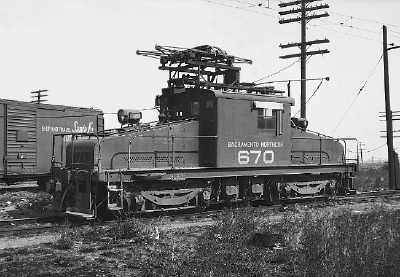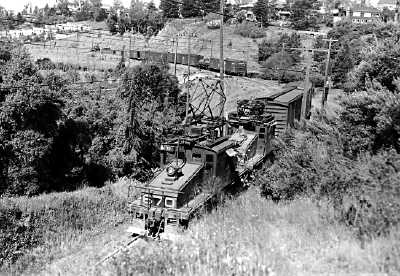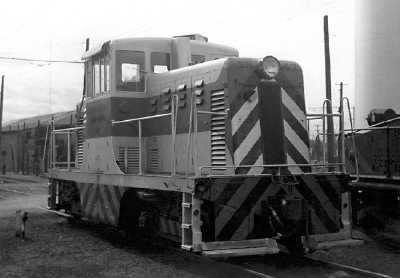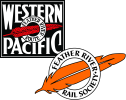BLACK WIDOWS OF THE SACRAMENTO NORTHERN
There were two "motors" or locomotives on the Sacramento Northern that crews called "Black Widows". One was electric locomotive 670, ex-Tidewater Southern 106. The second was General electric 44-ton diesel 147, previously from the San Francisco & Napa Valley which had served at the Mare Island Naval Shipyard bearing the name "Navy Yard Freight".
Number 147 remained in black paint for some time after its acquisition by the SN, hence the nickname "Black Widow". It did eventually receive the customary Western Pacific aluminum and orange "California Zephyr" paint scheme.

TS 106 came to the SN during World War II in exchange for SN box motors 601 and 602. TS 106 was built by General Electric in 1921. The motor weighed 126,100 pounds, and was rated at 820 horsepower, the same as the SN's 650 class.
TS 106 saw service over most of the SN's 1,500 volt lines, and even served on the Oakland Terminal Railway. After the war was over, 106 went back to Modesto, and 601 and 602 were returned to the SN. TS 106 wasn't always busy at Modesto. If the SN needed extra power, one of the motor's two trolley poles was replaced with a pantograph for operation on the SN. In 1948, the TS changed to diesel power and 106 was sold to the SN, renumbered 670 and lettered "Sacramento Northern".
Number 670 was the only 1,500 volt motor on the SN that didn't receive the orange diagonal "zebra" or visibility stripes, hence the "Black Widow" name.

One amazing incident took place with SN 670 while I was watching trains at the Concord depot, as I usually did when not in school. After the crew made their set-outs and pick-ups, I waited to see what was pushing at the rear of the train. Here came 670 pushing mightily behind the caboose, making more than the usual noise. Motorman-engineer Mr. Hutchins was hanging as far out of the window as possible and watching the wheels. As the motor went by I noticed the inboard wheels of the rear truck were spinning backwards!
After arriving at Port Chicago, a call was placed to 40th and Shafter shops. The shop crew said it was impossible for one set of wheels to turn in the wrong direction. On the return trip the shop crew drove alongside the train on the county road between St. Mary's and Moraga. Sure enough, one set of wheels was indeed spinning backwards. Of course, that evening it was promptly taken care of back at 40th and Shafter. I later learned that the wheels had been recently changed and when Mr. Bohannon, the electrician, connected the electric cables, one pair was crossed.
TS 106 had only an air whistle upon arrival on the SN. As 670, the motor was given a dual pneuphonic air horn salvaged from a scrapped SN passenger car. This air horn had a sound all its own, which set 670 apart from the other motors. There was no mistake in identifying 670 by it sound at the numerous grade crossings here in Concord.
A piece of 670 still survives. A short time before the end of electric operations at 40th and Shafter, 654 and 670 swapped trucks. SN 670 went to scrap in 1957 on 654's trucks. SN 654 is preserved at the Western Railway Museum, still riding on 670's trucks.
"Black Widow" 670 was on the SN roster from 1948 to 1957. Number 147 served from 1957 to 1970.

Mr. Campbell's story originally appeared in the Concord Historical Society's Concord Historian for August 1998. Special thanks for their kind permission to reproduce it here.

